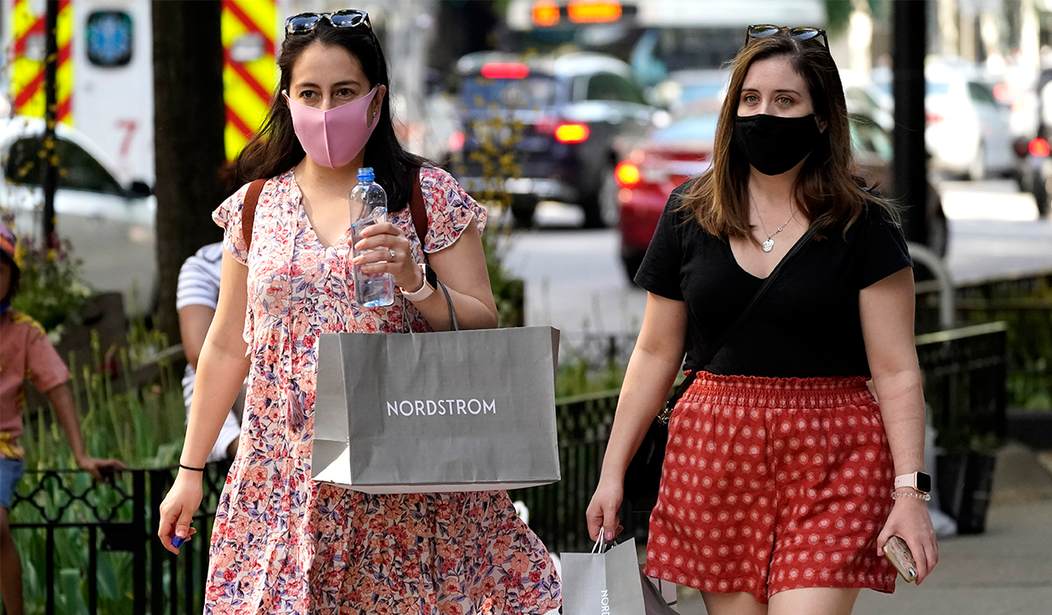Just a thought occasioned by the fact that the United States recorded 13,541 cases yesterday, the lowest single-day number — by far — since the virus started rolling last March. The best we’d managed since April 1, 2020 was one day last June when cases slipped under 19,000 briefly as the country enjoyed a summer respite from its terrible first wave. But testing was still sparse back then. There were probably many infections going undetected.
Last June was also the last time we saw a seven-day average in daily cases of 25,000 or lower, again with lower testing. Right now we’re at 25,083.
Is this it? The imminent demise of COVID?

There may have been a “Sunday effect” with yesterday’s numbers, as weekends tend to show fewer cases because not all jurisdictions are open and reporting on those days. But even so, we’ve had a lot of Sundays since March 2020 and never saw anything as low as 13,000 in a day.
Which, by the way, is tantalizingly close to the benchmark Anthony Fauci set months ago for what would constitute a “safe” level of infection in the U.S. warranting the easing of restrictions. Fauci has always keyed in on 10,000 cases per day (or less) as a threshold at which mass gatherings might be held again with little ill effect. It may be a few more weeks before we’re averaging a number as low as that but every indication right now suggests that we’re getting there. A quick check of the numbers, in fact, reveals that over the past two weeks 48 of the 50 states have seen cases decline. Of the two outliers, Idaho has seen cases rise by just two percent. And the other, Wyoming, is America’s least populous state, which means that there are still hardly any cases (83 per day) despite a 21 percent increase over the last 14 days.
What about hospitalizations, a more reliable metric of how much disease is circulating in the population? Have a look:

Fewer than 30,000 people are hospitalized in the U.S. for the first time since April 1, 2020. Again, we’ve never even come close to crossing that threshold since last spring; our best day until recently was 35,000 hospitalized last September. As for deaths:

We’re not quite yet at our best numbers of the pandemic, as there was a strange little dip last July that pushed the daily average below 500. At the rate we’re going, we should set a new low sometime next month.
So is the pandemic over — for now? Fall and winter may present a risk of resurgence, but is there anything realistically that’s going to halt the momentum towards normalcy this summer?
For the first time since we started tracking in March of 2020, a plurality of voters are not concerned about getting COVID-19🦠.
New updates on COVID-19 from our May Verified Voter Omnibus: https://t.co/1WYJpqNtIJ pic.twitter.com/O0xblpHWhE
— Echelon Insights (@EchelonInsights) May 24, 2021
Doesn’t seem like it, and Americans increasingly are acting on that reality. Green shoots of pre-pandemic behavior are sprouting, and not just in more conservative parts of the culture where you’d expect people to be more willing to flout the risk of infection. Live TV audiences are coming back:
JUST ANNOUNCED: @ColbertLateShow will return to The Ed Sullivan Theater on June 14 welcoming back a full and fully-vaccinated studio audience.
It's the first network late night show to make that move.@MegOliver explains. pic.twitter.com/ECICWlDRgN
— CBS This Morning (@CBSThisMorning) May 24, 2021
Our left-wing press corps is crowding back into our left-wing administration’s White House briefing room:
BIG CHANGE. WH briefing now at 50 percent capacity (24 seats filled) for first time in more than a year and first time in this administration. pic.twitter.com/PTf0nYHbCz
— Kelly O'Donnell (@KellyO) May 24, 2021
Big crowds indoors in a deep blue city? Yep, we’ve got that too:
Some 15,000 people. In one place. Indoors. 90% of them vaccinated. About 14 months after the start of a pandemic that put endless pain on the city and the world. MSG is rocking right now during Knicks lineup intros and loud as hell. What a wild sight to see and experience. pic.twitter.com/FV3pmQLcb5
— Mike Vorkunov (@MikeVorkunov) May 23, 2021
MSG is vibing right now
(via @Brett_Hanfling)pic.twitter.com/ksxaPYHkAU
— Sports Illustrated (@SInow) May 23, 2021
Ninety percent of Knicks fans at the game had been vaccinated or tested negative within the previous 72 hours.
Bottom line: The hot vax summer is coming.
The block is so hot crowds are just spontaneously bursting into dance pic.twitter.com/yFeonqbzAd
— Noah Hurowitz (@NoahHurowitz) May 23, 2021
In lieu of an exit question, read this post from Saturday if you missed it. Texas recently conducted a grand-scale experiment on whether it’s safe to hold mass indoor events. That experiment seems to have been successful. Full normalcy may be just weeks away for most of the country.







Join the conversation as a VIP Member